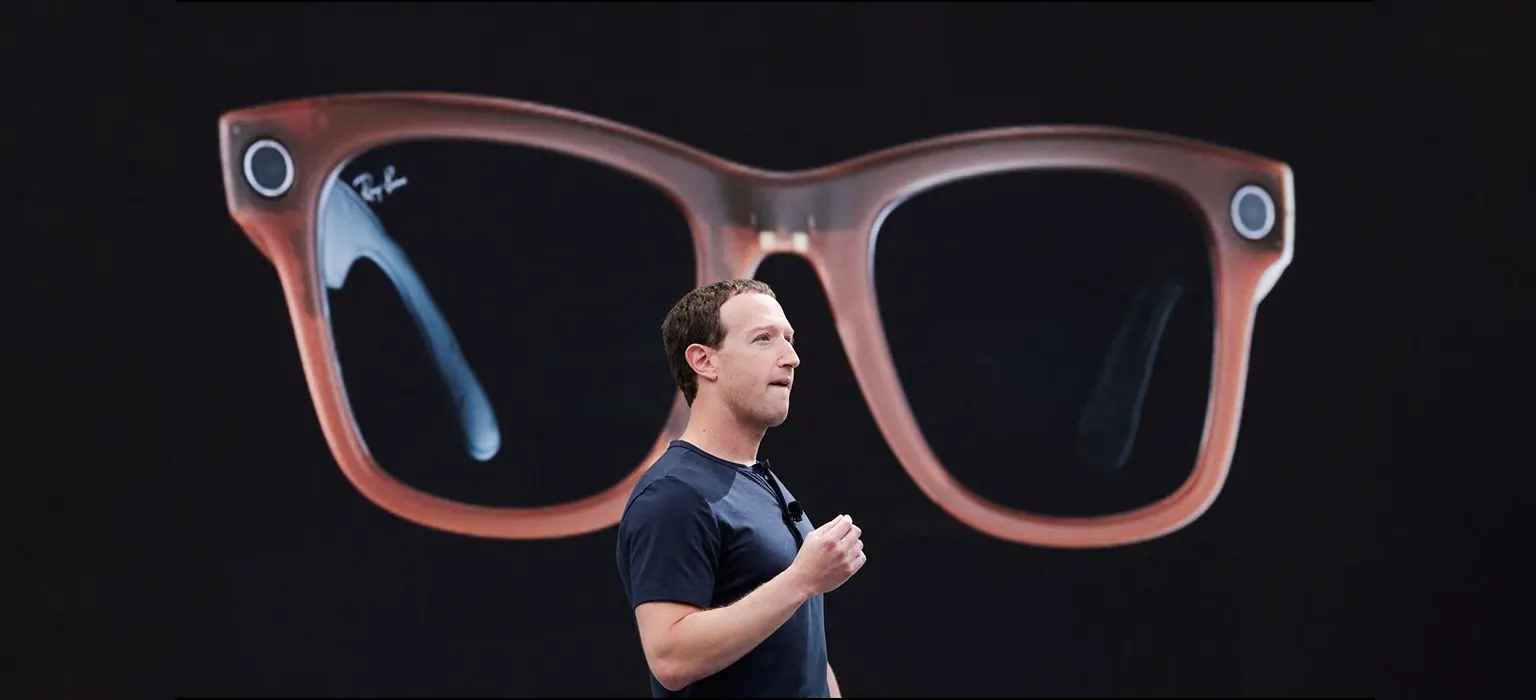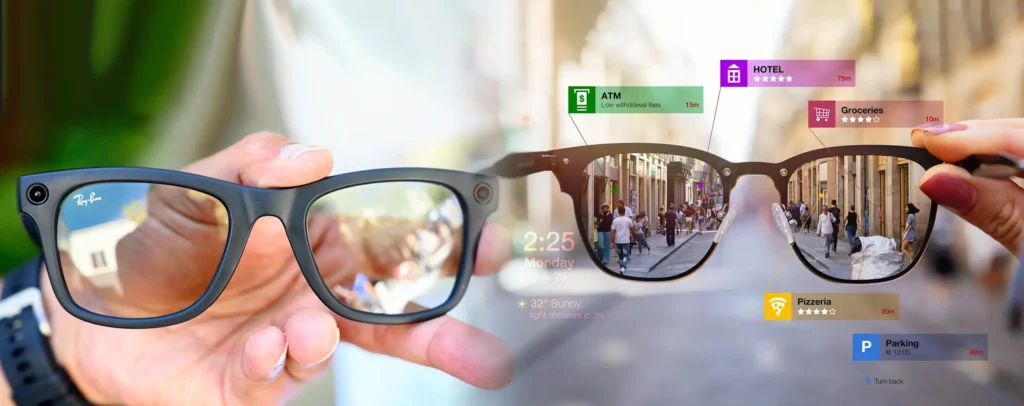
You may one day view the world through advanced glasses instead of looking at your phone screen. That’s if Meta has its way. The tech company is working on special glasses that show digital information right before your eyes.
Meta’s Vision for Augmented Reality Eyewear
Meta thinks regular smartphones could become old news. They want to replace it with smart glasses using something called “augmented reality” (AR). These AR glasses would display helpful digital images and information over real-life scenery.
This lets you see holograms, notifications, directions and more without even glancing at your phone. Almost like virtual reality but still viewing the actual environment around you too.

Building the Most Advanced AR Device Ever
According to Meta’s technology leader Andrew Bosworth, these AR glasses might be the most complex consumer gadget ever invented! The company calls the secret project to create them “Project Nazare.”
The aim is for early prototype Nazare glasses to be ready by 2024. Then improved versions in 2026 and 2028 leading up to commercial launch before 2030. That’s only a few years away!
Biggest Design Hurdles to Overcome
There are still major challenges to figure out first. Right now Meta is working on:
- Making super clear high-resolution displays that don’t cost too much
- Finding new durable materials for consumer glasses
- Adding enough battery power so they don’t need charging all day
Once these complex puzzles are solved, we may all view the world through Meta’s reality-bending lenses.
AI Assistant to Make Glasses Smarter
Luckily, rapid progress in artificial intelligence (AI) will make these AR glasses way more useful than first expected. Meta’s Bosworth says a great AI helper could even allow compromises in other areas of the design.
So how exactly AI will integrate remains a mystery. But it would likely help with things like facial/scene recognition, information retrieval, hologram rendering, translations, and more.
An Immersive Smartphone Replacement
Meta ultimately envisions Nazare glasses totally replacing mobile phones down the road. By layering digital elements into real environments, they hope to make interacting with info more immersive than ever through holograms and advanced hand tracking.
It may be many years yet before regular consumers experience this sci-fi tech themselves. But Meta’s heavy investment shows their belief that smartphones won’t always be humanity’s primary computing devices. The question is whether their R&D pays off in finally bringing this “augmented” reality to life years from now!
Obstacles Still Remaining
While rapid prototyping continues behind closed doors, Meta still confronts skepticism around fundamental feasibility and adoption challenges for their augmented reality glasses vision.
True Consumer Appeal?
History shows early adopters happily pay premiums for bragging rights owning cutting-edge gadgets. But for mainstream uptake, wearables must visibly improve daily life for regular users right out of the box.
Google’s unsuccessful forays into smart glasses strived far beyond tech circles without demonstrable purpose. For Nazare eyewear to reach critical mass, Meta must clearly communicate indispensable utility justifying cost, appearance and privacy concessions.
Without obvious differentiation augmenting real needs immediately, another avoidable flop looms large ignoring hard lessons learned before.
The Hardware Hurdle
On the engineering front, form factor constraints around projection, clarity and battery longevity also still seem distant from viably slipping such cybernetic hardware onto consumers’ biological faces.
Cramming all the required components into a comfortable, lightweight, fashion-forward frame remains highly complex on paper and in practice so far. As Apple knows well with past false starts into wearables, scaling the most advanced tech miniaturization into globally shippable products demands years more patient trial-and-error.
And the human sensory system does not offer much tolerance for subpar visual acuity or laggy graphical overlays. So quality must match astonishing sci-fi aesthetics glimpsed in Meta’s concept videos over the past decade pitching this vision.
AI Assistance Still Nascent
Lastly, augmented reality without robust voice-driven AI support lack’s the killer app dynamism Meta promises. Bixby and Siri still stumble frequently with far simpler smartphone domains. And private audio input/output carries deeper social acceptance obstacles than tapping screens publicly.
For hands-free help identifying objects, people and places viewed through enhanced lenses, the assistant itself requires enhancement well beyond today’s solutions. Perhaps by this decade’s end as research accelerates, Gazare glasses could truly tap into next-gen AI as more than marketing hype. But not yet.
While tech pundits debate Nazare’s genuine near-term business prospects, Meta clearly intends to sink R&D billions into augmented reality for years chasing this dream. Only time will tell if their grand vision incrementally materializes or needs revising in response.
Final Words
So, will Project Nazare be the next big tech boom or just a fancy paperweight? Only time will tell. Some folks are hyped, imagining glasses that show you emails while walking your dog or floaty recipes next to your pan. Others are worried about privacy, safety, and getting glued to an augmented world. Meta’s throwing serious dough at this, so it’s gonna be a wild ride either way. Buckle up, tech fam – the next chapter in this story starts now!
Read More :-
